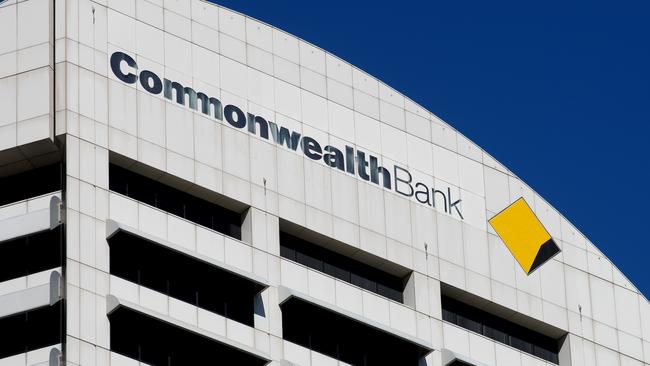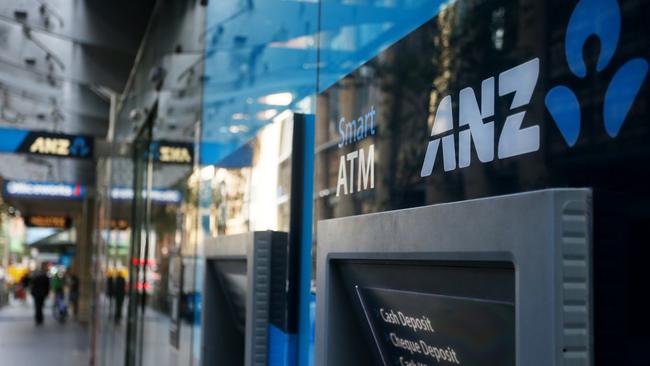Commonwealth Bank prepares to take on Wall Street’s biggest
The Australian bank has passed a staggering milestone. Can it continue to defy gravity?

Business
Don't miss out on the headlines from Business. Followed categories will be added to My News.
Matt Comyn’s Commonwealth Bank has quietly passed a remarkable milestone.
In recent days, the Australian home lender overtook US global powerhouse Citi in terms of market capitalisation, and is now bigger than any of Japan’s banking giants.
In fact, Comyn is knocking loudly on the door to get a spot on the B-10 – the exclusive club that counts the world’s 10 biggest banks by market capitalisation as members.
The quiet rise of CBA says more about the defiant Aussie economy than anything else, and the prospect of another interest rate rise here could just get it there. It also highlights Citi’s own moves to pull back and exit business lines from around the world amid a slashing of management ranks under chief executive Jane Fraser.

Even with today’s modest falls and the pullback from last week’s record highs, CBA’s $211bn ($US140.7bn) market cap puts it just $US5bn short of Wall Street power Goldman
Sachs and $US10bn behind Royal Bank of Canada. The Australian bank is chasing down another Wall Street major and the world’s tenth-largest listed bank, Morgan Stanley, at $US157.1bn. It’s still a long way from the biggest bank, JPMorgan Chase, which weighs in at $US580bn.
What makes the rise and rise of CBA even more remarkable is that it is an Australian-focused bank with a small New Zealand franchise.
Indeed, CBA is so anchored in Australia it is not even considered by banking authorities a G-SIB – a globally systemically important bank – which is pretty much a prerequisite to become a top 10 bank.
In less technical terms, this means CBA’s highly unlikely demise – while devastating for Australia – would be regarded as only registering a ripple rather than a wave on the global banking system.

Still, being a G-SIB is not only a great responsibility, it comes with a cost of being required to set aside even more capital as a safety measure.
Hedge funds have again given up betting against CBA, their last serious go was last November when the bank was trading at around $95 a share. Today, it’s at $126 and the short interest is subsiding.
CBA’s defiance has caused significant pain among some of the nation’s top banking analysts.
Of the 16 sell side analysts that track CBA’s shares, 13 have a sell or underperform recommendation. The other three have a hold recommendation, according to Bloomberg numbers.
The price targets most analysts have pencilled in are around 30 per cent underwater on where CBA is today. It might be a moment in time, but the number is not insignificant.
Over the past three years, more than half of the analysts following the stock have had a sell recommendation on CBA, and yet the bank has consistently shown them up.
The question is why?
For years, the smart money has followed CBA as a proxy for the Australian economy. And this is something that continues to defy the sceptics. Even with inflation holding sticky, Australia is expected to avoid falling into a recession.
The jobs market too is holding up and this is keeping lending losses unusually low. Sitting on top of that is CBA with more than 25 per cent share of the nation’s home lending market and dominant in all parts of the retail banking chain, including collecting deposits and transactions.
Defying gravity?
CBA’s size also gives it an advantage. It is a highly efficient machine, with the scale benefits flowing through all parts of the bank. This means that everything CBA does can be done at a relatively lower unit cost than its domestic rivals. And this has allowed it to power ahead with massive investment in technology that continues to give it an edge. The lack of a complicated and highly regulated international footprint also works in its favour.
As CBA ruled off its accounts on Friday, can it continue to defy gravity?
That depends, says Perpetual senior equities analyst Brett Le Mesurier, and the key could be if the RBA reluctantly hikes the cash rate again.

Higher cash rates boosts profit margins and this really works in favour of CBA, which is sitting on the biggest book of cheap deposits in the country. Bankers call this the replicating portfolio – the near zero rate transaction accounts that are the landing ground for day-to-day deposits and weekly pay cheques.
The other side to the bet on CBA is lending losses rise as the economy slows. And CBA is the most levered to the economy and that could take a big slice out of the bank’s profit.
“Which one are you going to bet on? Higher income or higher bad debts? Take your pick,” Le Mesurier tells The Australian.
The investors jumping into CBA along with higher cash rates are backing the higher profit story. The argument here is that bank lending losses to date have held stubbornly low even as the cash rate has shot up.
Remember loud warnings of the “mortgage cliff” and the predictions of gloom when the official cash rate was about to break through the 4 per cent threshold? There’s been several rate hikes since then, and lending losses have barely budged. Will one more make all the difference? Make your bet on CBA – one of the world’s biggest banks.
ANZ’s Setting Sun
The $4.9bn swoop on Suncorp’s bank had another sting in the very long tail for ANZ.
As part of approval for the deal Treasurer Jim Chalmers has forced the Melbourne-based lender back to the negotiating table to strike a deal with Australia Post to offer banking-style services through the post office’s branch network.
Bank@Post has been too successful for Australia Post since the initiative was rebooted last decade. Hundreds of branch closures across all the major banks since the Covid pandemic has only added to demand for the service that processes more than 16 million transactions a year.
The challenges around shipping cash across the country with the drop-off in demand has only added to AusPost’s costs, which is already losing money on its traditional letters business.
From 2022, AusPost struck a decade-long deals with National Australia Bank, Commonwealth Bank and a year later with Westpac.

As a sidebar it was these deals and the – authorised – bonuses signed off by then AusPost boss Christine Holgate that sparked the clash with former prime minister Scott Morrison.
However, ANZ held out of re-signing with AusPost, arguing its regional network was never of scale needed to use the Bank@Post service. Privately, ANZ also had concerns around technology compatibility with the AusPost network.
Chalmers’ intervention comes while discussions have already resumed between ANZ and AusPost. Expect the Treasurer’s condition to see a long-term deal struck between the two sooner than later.
As part of his approval, Chalmers also put the demand that ANZ maintains Suncorp’s regional branch numbers and there will be no net job losses in Australia as a direct result of the acquisition – including on the ANZ side. While ANZ already committed to the branch network, all this incrementally adds to the cost.

Suncorp, which is more than ready to become a pure play insurer, has agreed to chip in some of the extra cost to the Treasurer’s conditions – this includes waiving a brand licensing fee and some additional integration costs.
That goes to show the close relationship that developed between ANZ’s Shayne Elliott and Suncorp’s Steve Johnston in the acquisition that is now into its second year. ANZ is now expected to formally pick up the keys to Suncorp at the end of this month.
While Suncorp stands to deliver around a million new customers to ANZ, the value of the deal will be through its ability to hang on to the customers through the distraction of the merger.
The integration of technology and systems between the two banks also represents a major vulnerability – although ANZ has been able to use the long regulatory process to get a head start on this.
Still, other banks now have a rare window where the best Suncorp customers will be up for grabs. Watch as ANZ’s rivals are preparing to sharpen their pricing and offers in coming weeks. Let the games begin.
johnstone@theaustralian.com.au
Originally published as Commonwealth Bank prepares to take on Wall Street’s biggest





